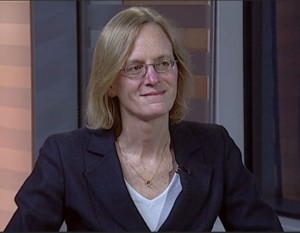
As The Economist reported this week, assets of exchange-traded funds (ETFs) have now surpassed those of hedge funds. In one of its “Leaders,” the British weekly described hedge funds as a “fatal distraction” for pension funds. It also ran a longer piece on the same story, saying ETFs are roaring ahead of hedge funds.
Back in 1999, ETFs had only 10% of the assets under management enjoyed by hedge funds. Today, according to research firm ETFGI LP of London, UK, assets in the global ETF industry were US$2.971 trillion (that’s Trillion with a T!), compared to US$2.969 trillion for hedge funds. But of the $36 trillion (US$) invested in pension funds worldwide, only $3 trillion are in hedge funds. It noted that CalPERS, a huge US pension fund, has “concluded putting money in hedge funds is not worth the bother.”
I talked to ETFGI managing partner Deborah Fuhr (who left BlackRock four years ago) after the Economist article came out this week. She said the ETF industry likely became bigger than hedge funds back in May of 2015, when ETF assets reached US$3 trillion but as Hedge Fund Research only provides quarterly data rather than monthly, it could not be confirmed until now.
It’s a big milestone for ETFs but there’s still a long way to go before ETFs catch mutual funds. Fuhr says global ETFs have just 8.4% of the assets claimed by the mutual fund industry.
Stocks versus Bonds
Here at the Hub the past week we had a study in contrasts, with two financial expert/authors running guest blogs with quite disparate views on asset allocation. On Tuesday, chartered accountant David Trahair told Hub readers why he is 100% in fixed income, primarily through GICs.
On Friday, we ran the contrary case from Bob Cable, head of ScotiaMcCleod’s Cable Group. His title for the blog was Stocks beat Bonds, Hands Down. We’ll review both books later this month but such divergent views on asset classes does illustrate why you may need some exposure to both, just in case one or the other turns out to be wrong. I can see the case for fixed income in registered portfolios but in taxable portfolios, the higher after-tax returns of dividend-paying stocks seem compelling, and Cable’s numbers seem to back that up over the long turn.
Paying Dividends
If you’re inclined to lean to the stock-side of the equation, you may find a guest blog at Robb Engen’s Boomer & Echo site of interest: The Birth of a Dividend Stock List. While Engen himself has moved to a two-ETF passive solution, he wrote:
I still believe that an investor with the right temperament and patience can succeed with a dividend growth (or value investing) strategy over the long term.
Boomers overweight stocks?
Then again, it seems many baby boomers who are at or near retirement may be too heavy on stocks. So argued Business Insider this week in a piece entitled, FIDELITY: Baby boomers own too much stock. Mutual fund giant Fidelity Investments released a quarterly analysis of 401(k) plans and IRAs, and found that 27% of boomers aged 55 to 59 had stock exposure in excess of 10% of what is recommended at that age. 10% of them were 100% exposed to stocks, similar to the 11% of the slightly younger boomers aged 50 to 54.
Fidelity also found that the average 401(k) balance was US$91,100 at the end of the second quarter, down from US$91,800 at the end of the first quarter.


